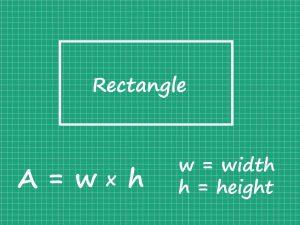Key Concepts
- Understand glide reflection
- Use glide reflection to solve problems
- Compositions of transformations
- Composition theorem
- Find an image of composition
Glide reflection
A translation followed by a reflection can be performed one after the other to produce a glide reflection. A translation can be called a glide. A glide reflection is a transformation in which every point P is mapped to a point P” by the following steps.
Step 1: First, a translation maps P to P’.
Step 2: Then, a reflection in a line k parallel to the direction of the translation maps P’ to P”.

Finding the image of a glide reflection
Let us understand the concept with an example:
Example:
The vertices of ∆ABC are A(3, 2), B(6, 3), and C(7, 1). Find the image of ∆ABC after the glide reflection.
Translation: (x, y) → (x – 12, y)
Reflection: In the x-axis
Solution:
Begin by graphing
∆ABC. Then graph ∆A’B’C’ after a translation of 12 units left. Finally, graph ∆A”B”C” after a reflection in the x-axis.

Compositions of transformations
When two or more transformations are combined to form a single transformation, the result is a composition of transformations.
A glide reflection is an example of a composition of transformations.
Composition Theorem
Given: A rotation about P maps Q to Q’ and R to R’. A reflection in m maps Q’ to Q” and R’ to R”.

To prove: QR = Q”R”
Proof:
Rotation is an isometry, so QR= Q’R’
Reflection is an isometry, so Q’R’ = Q”R”
- QR =Q’R’ = Q”R”
- QR= Q”R”
Finding the image of composition
The endpoints of RS are R(1, -3) and S(2, -6). Graph the image of RS- after the composition.
Reflection: In the y-axis
Rotation: 90° about the origin.
Solution:
Step 1: Graph RS
Step 2: Reflect RS in the y-axis. R′S′ has endpoints R’(-1, -3) and S’(-2, -6).
Step 3: Rotate R’S’ 90 ° about the origin. R”S” has endpoints R’’(3, -1) and S’’(6, -2).

Examples:
1. The endpoints of CD−CD- are C(2, -5) and D(4, 0). Graph the image of CD−CD- after the glide reflection.
Translation: (x, y) → (x, y – 1)
Reflection: In the y-axis
Solution:
Given the endpoints of CD- are C(2, -5) and D(4, 0).
Translation rule here is (x, y) → (x, y – 1); now, let us translate the points C and D.
C(2, -5) à C’(2, -5-1) = C’(2,-6)
D(4, 0) à D’(4, 0-1) = D’(4, -1)
Now let us graph CD- and C′D′-.

Now we need to reflect
C′D′- about y-axis.
We know that Coordinate notation for reflection along the y-axis:
Multiply the x-coordinate by -1.
(x, y) à (-x, y)
C’(2,-6) àC”(-2,-6)
D’(4, -1) à D”(-4,-1)
Now let us graph C”D”

2. The vertices of ΔABC are P(2, 4), Q(6, 0), and R(7, 2). Graph the image of Δ∆ABC after the composition of the transformations in the order they are listed.
Translation: (x, y) → (x, y – 5)
Reflection: In the y-axis
Solution:
Given coordinates of triangle PQR are P(2, 4), Q(6, 0), and R(7, 2).
Here, the translation rule is (x, y) → (x, y – 5).
A(2, 4) à A’(2, 4-5) = A’(2, -1)
B(6, 0) à B’(6, 0-5) = B’(6,-5)
C(7, 2) à C’(7, 2- 5) =C’(7, -3)
Now let us graph ΔABC and ΔA′B′C′

Now we need to reflect the ΔA′B′C′ in the y−axis.
Coordinate notation for reflection along the y-axis:
Multiply the x-coordinate by -1.
(x, y) à (-x, y)
A’(2, -1) à A’’(-2,-1)
B’(6,-5) à B’’(-6,-5)
C’(7, -3) à C’’(-7,-3)
Now let us graph ΔA′’B′’C′’
.

Exercise
- The endpoints of (AB) ̅ are A(2, -5) and B(4, 0). Graph the image of (AB) ̅ after the glide reflection.
- Translation: (x, y) → (x- 3, y)
- Reflection: In y = -1
- The vertices of ∆PQR are P(2, 4), Q(6, 0), and R(7, 2). Graph the image of ∆PQR after the composition of the transformations in the order they are listed.
- Translation: (x, y) → (x – 3, y + 2)
- Reflection: In the x- axis.
- The endpoints of (AB) ̅ are A(2, -5) and B(4, 0). Graph the image of (AB) ̅ after the glide reflection.
- Translation: (x, y) → (x- 3, y-2)
- Reflection: In the x – axis
- The endpoints of (AB) ̅ are A(2, -5) and B(4, 0). Graph the image of (AB) ̅ after the glide reflection.
- Translation: (x, y) → (x- 3, y-2)
- Reflection: In the y = x
- The endpoints of (AB) ̅ are A(2, -5) and B(4, 0). Graph the image of (AB) ̅ after the glide reflection.
- Translation: (x, y) → (x- 3, y+2)
- Reflection: In the y = -x
- The vertices of ∆PQR are P(2, 4), Q(6, 0), and R(7, 2). Graph the image of ∆PQR after the composition of the transformations in the order they are listed.
- Translation: (x, y) → (x – 3, y + 2) Reflection: In y = x.
- Describe the composition of transformation.

- Describe the type of composition of transformation.

- Describe the type of composition of transformation.

Concept Map

What we have learned
- Understand glide reflection
- Use glide reflection to solve problems
- Compositions of transformations
- Composition theorem
- Find an image of composition
FAQs
- What is the glide reflection order?
Ans) Glide reflections can happen either before or after translation, depending on the situation. The final image produced by the glide reflection will be the same in either case.
- What does a glide reflection look like?
Ans) Footprints in the sand or the leaves of a tree are two examples of glide reflections in the real world. The final image is produced by reflecting and translating the shape in each of these examples.
- Glide reflections: what are they?
Ans) A transformation with both a reflection and a translation is referred to as a glide reflection. Although both are necessary to produce the final image of a glide reflection, the modifications can take place in any direction.
Related topics
Addition and Multiplication Using Counters & Bar-Diagrams
Introduction: We can find the solution to the word problem by solving it. Here, in this topic, we can use 3 methods to find the solution. 1. Add using counters 2. Use factors to get the product 3. Write equations to find the unknown. Addition Equation: 8+8+8 =? Multiplication equation: 3×8=? Example 1: Andrew has […]
Read More >>Dilation: Definitions, Characteristics, and Similarities
Understanding Dilation A dilation is a transformation that produces an image that is of the same shape and different sizes. Dilation that creates a larger image is called enlargement. Describing Dilation Dilation of Scale Factor 2 The following figure undergoes a dilation with a scale factor of 2 giving an image A’ (2, 4), B’ […]
Read More >>How to Write and Interpret Numerical Expressions?
Write numerical expressions What is the Meaning of Numerical Expression? A numerical expression is a combination of numbers and integers using basic operations such as addition, subtraction, multiplication, or division. The word PEMDAS stands for: P → Parentheses E → Exponents M → Multiplication D → Division A → Addition S → Subtraction Some examples […]
Read More >>System of Linear Inequalities and Equations
Introduction: Systems of Linear Inequalities: A system of linear inequalities is a set of two or more linear inequalities in the same variables. The following example illustrates this, y < x + 2…………..Inequality 1 y ≥ 2x − 1…………Inequality 2 Solution of a System of Linear Inequalities: A solution of a system of linear inequalities […]
Read More >>Other topics







Comments: